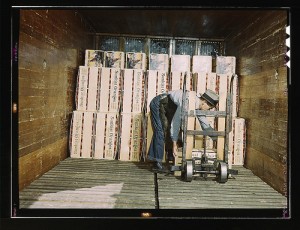Freight Class Made Simple
Perhaps the most misunderstood term in LTL freight shipping is freight class. Even experienced shippers can be confused by freight class. However, to get an LTL shipping quote, you need either to know your freight class or to know enough about your item to help a sales rep look up the National Motor Freight Classification. Typically, this means knowing what the item is made of, how it is packaged, or what it is used for. Freight class is not subjectively determined by a carrier or broker; it is determined by the National Motor Freight Traffic Association.
There are 18 classes, numbered 50 through 500, as follows: 50, 55, 60, 65, 70, 77.5, 85, 92.5, 100, 110, 125, 150, 175, 200, 250, 300, 400, 500. Every item imaginable has both a NMFC number and a corresponding freight class. Some examples are:
Automobile engine, class 85, NMFC # 120790
Salad dressing, class 60, NMFC # 73227
Of course, freight classes change from year to year to accommodate changes in the marketplace. New products are being invented all the time!
Shippers often ask, “What is freight class for? How does it affect my price?” The best explanation is that the class is a measure of how dense, breakable, and valuable an item is. The higher the density and/or value, the higher the class, and the greater the cost to ship. This is because items that are unlikely to break are unlikely to result in claims and extra costs for the LTL carrier.
Occasionally, packaging an item in a more secure way, such as in a crate instead of on a pallet, will result in a lower freight class and a lower overall price. This is generally true of machinery and engines.
We hope this shed some light for you on this tricky topic! The next time you need an LTL quote, we’ll be happy to look up your freight class for you.



